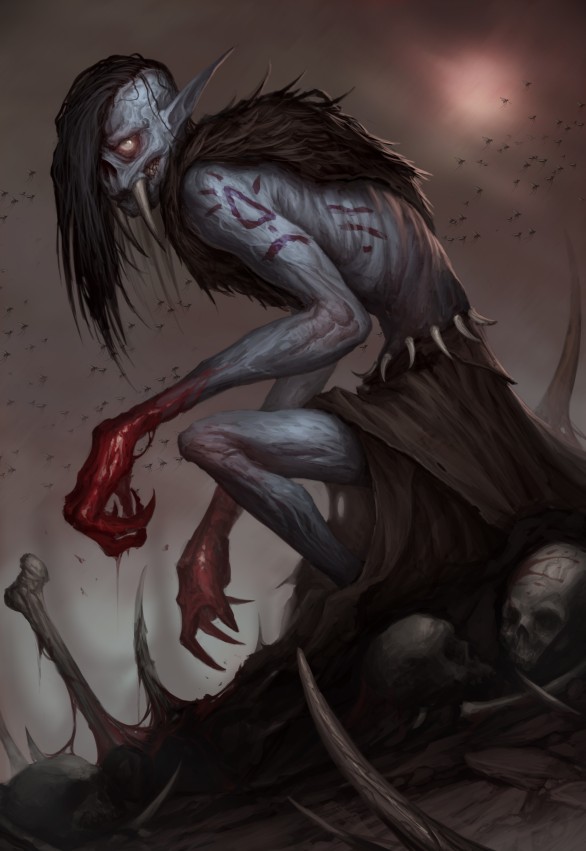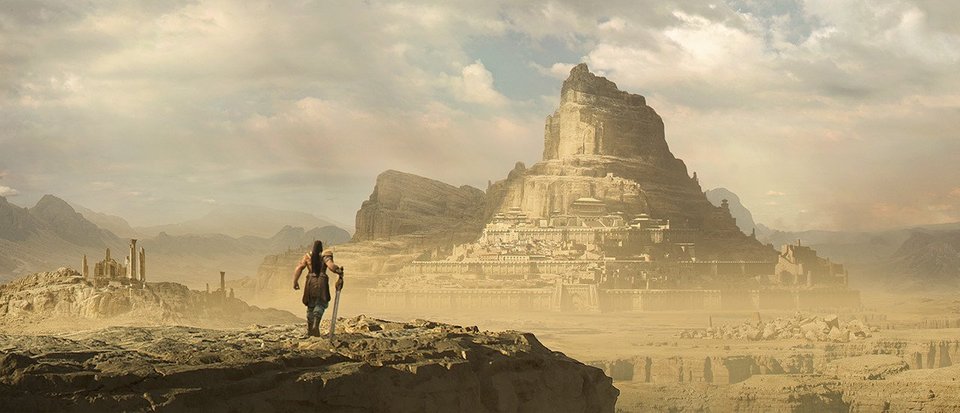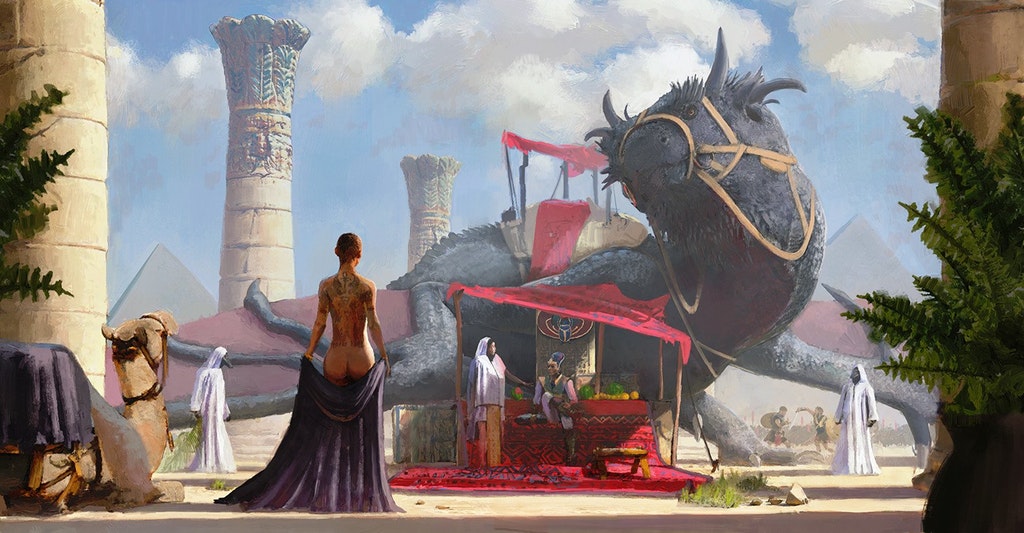The first omen of the Hunger is the image of a starving child, seen in reflection or shadow. The scholars of Irth-Ometh had no name for it; ancient oral histories referenced it only obliquely, hinting at its origins in some immense primordial sin.
The streets of Irth-Ometh are silent now. Old maps, cut into scraps of leather, claim to give its location. Most are false, but should you find a true one, you can follow it to a city half-buried in sand: vast temples of marble and glass, sandstone columns crumbling into dust, dry pools in desiccated courtyards, and the heaped bones of dry dead.
There are monsters in these streets – the Starving Bones and pathetic, roaming masses of flesh, the Cannibal Colossi, final doom of Irth-Ometh’s people. There are treasures, too, buried beneath the sand.
But do not linger too long in Irth-Ometh, the great lost city of gold, or you will begin to see the silhouette of a starving child, reflected in glass or concealed in shadow, and you will bring the Hunger with you wherever you go.
Starving Bones. HD 1; Atk claws d6; Def as chain. Appear in groups of 6-36. Pathetically desiccated skeletons, the sound of bone rubbing against crumbling bone. On kill, they frantically devour their victim with their dried jaws; flesh begins to grow on their bones, they gain +1 HD.
Cannibal Colossus. HD 10; Atk mad flailings – d6 x 10 attacks against random targets. A roaming elephantine mass of bone & flesh: at least a dozen human corpses, fused in a wolf’s shape, perpetually putrefying. Frantically devours each kill. The corpse then slowly buds from its mass, tumourlike, and it gains +1 HD and 1 more attack.
How to End the Hunger’s Scourge.
It attaches itself to humans & spreads, like a virus, to any group of people encountered after. Potential cures, found in folklore or ancient writings:
- A ritual requiring human sacrifice, taking place over 30 days. Discovered in Irth-Ometh, too late to be executed.
- Nine days of starvation renders one immune.
- There is no cure. Those infected with the Hunger must be killed before it can spread.









